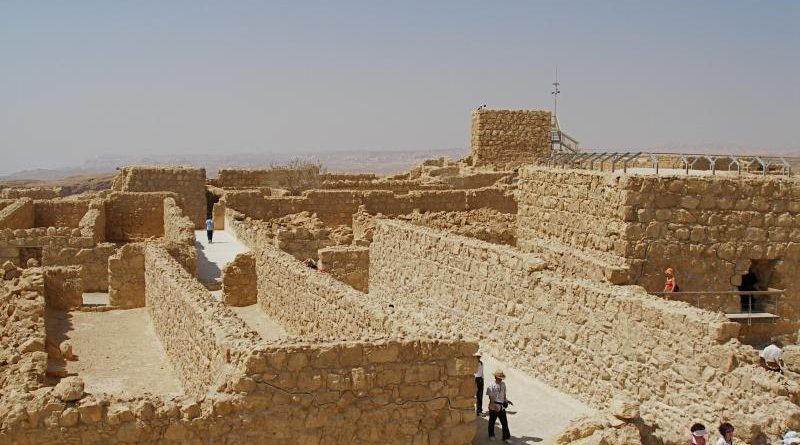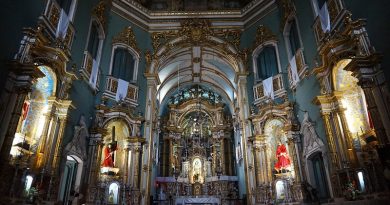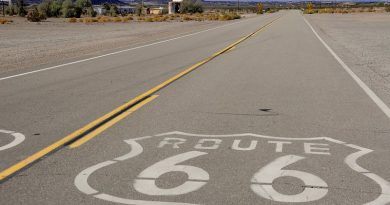Masada – a symbol of Israel
Sitting on a desert plateau overlooking the Dead Sea in Israel is Masada, the most visited archeological site in Israel and a popular climb, either from the Dead Sea in the east or the steep “snake path” from the west.
Masada, Hebrew for “fortress”, is a naturally created safe house, separated from the mountains by two deep gorges, with a sheer drop into the Dead Sea, the lowest point on earth.
History of Masada
Originally Masada was built as a palace by Herod the Great and it’s probably one of the most interesting archaeological digs in the country. It was the king’s luxury summerhouse with steam baths and water cisterns in a luxury mountain resort.
In 66AD Masada was captured by a small group of Jews resisting the Roman Empire who were later joined by a group of Zealots fleeing Jerusalem. Six years later, an army of 15,000 sieged Masada and built a wall around the base of the mountain. The zealot Jews could survive for a long time on their immense food and water reserves, but the 977 men, women and children chose an honourable death by their own hands rather than slaughtered by Romans. Their leader, Eleazar Ben Yair, ordered 10 men to kill the others 967, then one to kill the other nine elected by the people, then he killed himself. However, one man, Josephus Flavius, managing to escape the suicide pact and defected to the other side, becoming a Roman citizen and historian, chronicling the story of Masada in his book “The Jewish War”.
Eleven small ostraca were uncovered during excavation, showing the names of Ben Yair, the Zealot leader and ten other men, thought to be the ten suicide slaughterers. The Masada community set fire to the whole fortress bar the stores, to show the Romans it was not hunger that led them to give up.
History Facts
When: Most famed event in 66AD
Built by: Herod the Great, or rather his ‘people’
History: Mass suicide, bravery and a fight for Jewish freedom
Best Enjoyed: Mgnificent hill climb, powerful history & stunning architecture
Architecture of Masada
The original fortress was made of thick dolomite stone covered in plaster to keep cool in the hot, hot desert. It consisted of storerooms, living quarters, administrative buildings, an Underground cistern a palace, bathhouse, synagogue, throne room and Herod’s palace-villa – the king’s equivalent of a summer house.
The siege of Masada has been adopted as a symbol for the modern State of Israel with the oath that ‘Masada shall not fall again”, so the recent theory that the events never happened is not welcome in Israel. Masada is a symbol of freedom and independence to the Jewish world and determination to die for their beliefs and to remain strong in the face of adversity is a philosophy which has allowed Judaism to survive for so long, particularly during the twentieth century and the atrocities of the Holocaust. Recruits of the Israel Defence Forces Armoured Unit swear their oath of allegiance in an annual ceremony on Masada’s summit.
The mystery of finding the ruins of Masada enticed many a traveller to the Judean desert, and it was identified in 1842 and later excavated in the 1960s and has since become a national tourist attraction.
Destination – Israel
More Information
Masada: Desert Fortress Overlooking the Dead Sea
Jewish Virtual Library article on the history and archeological finds at the Masada site.
By Susi O’Neill




